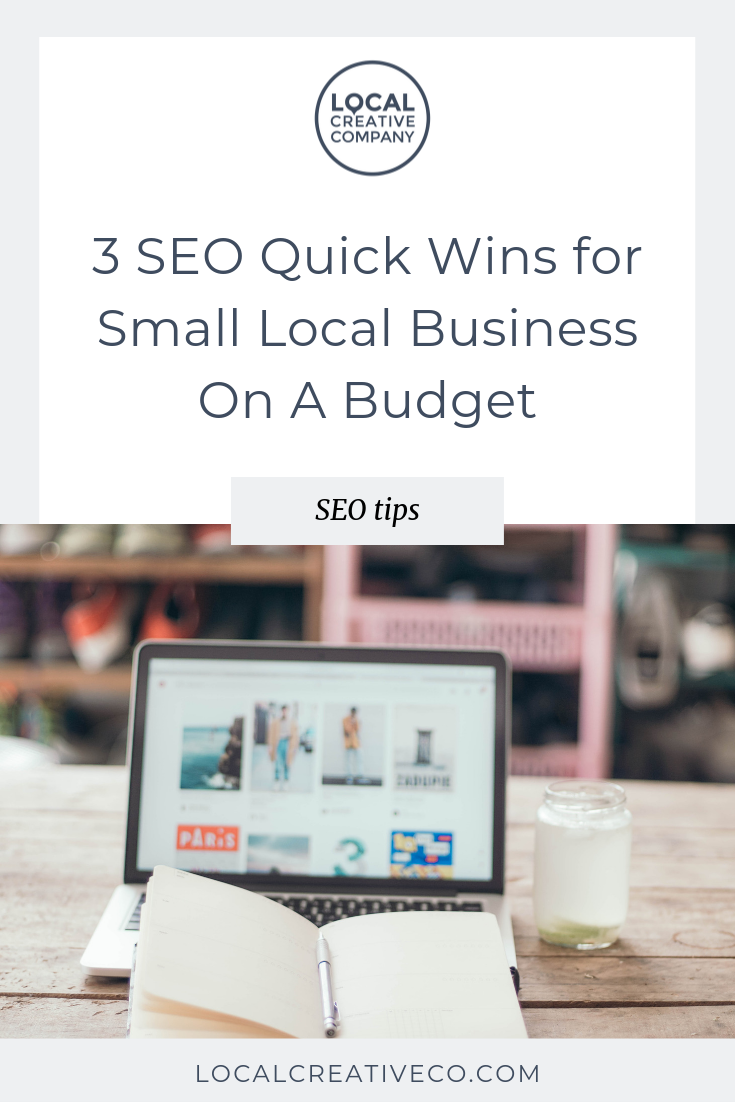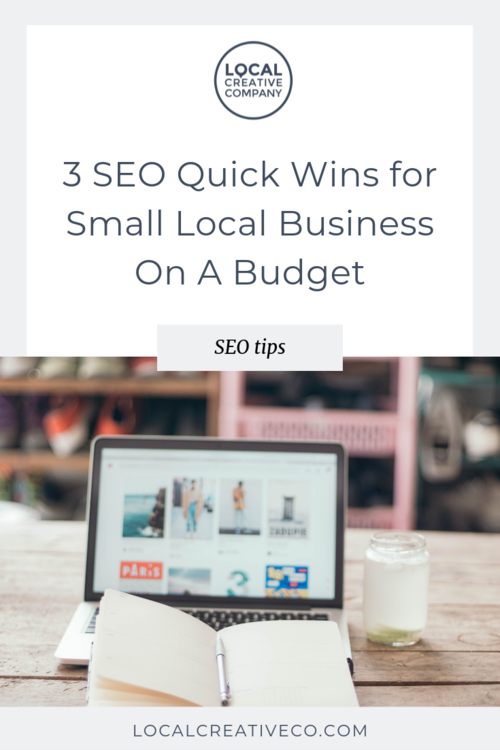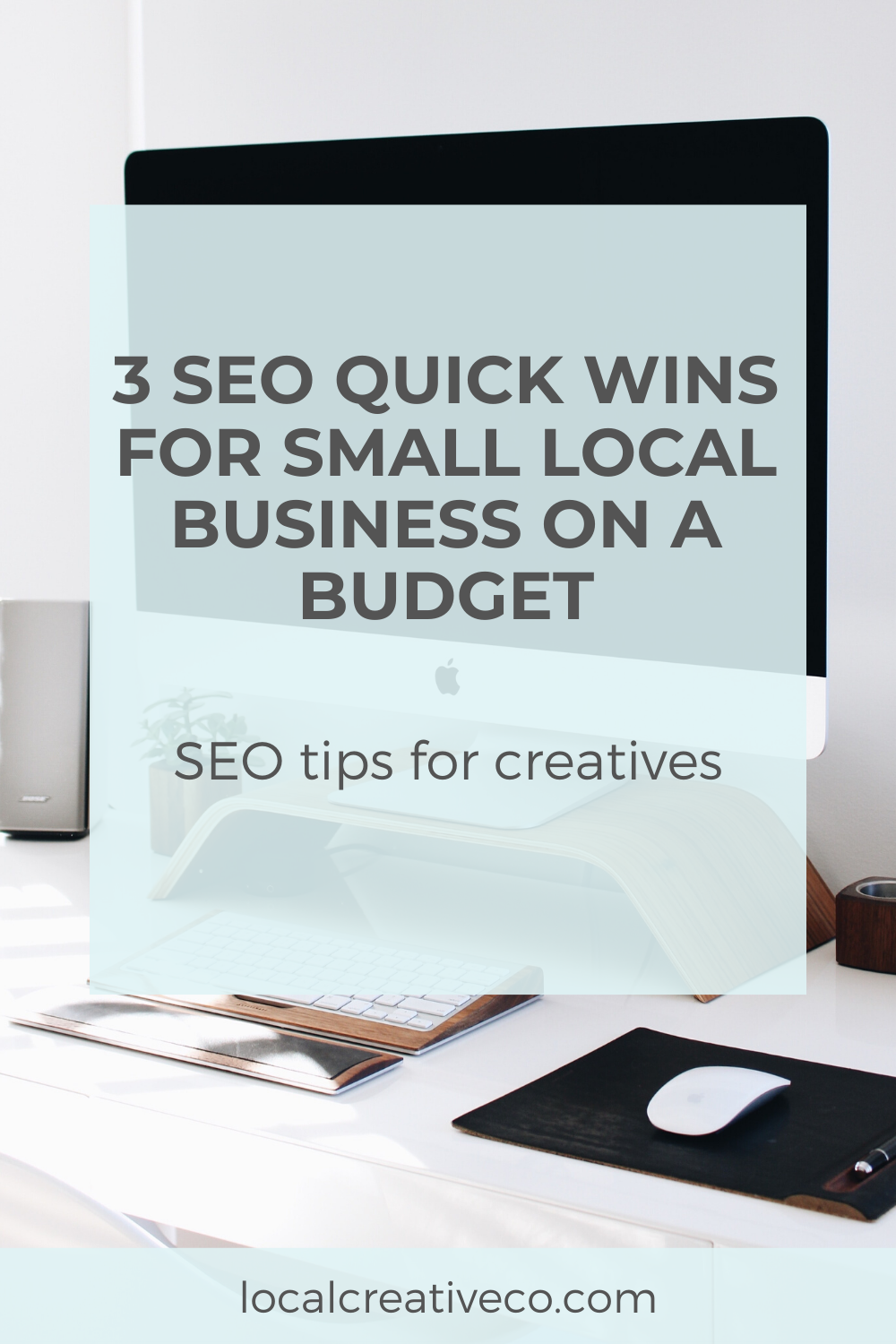
When it comes to SEO, every small business on a budget wants fast results.
Putting together an entire SEO strategy can take months, but there are some things you can do in the meantime to gain traction as your business grows.
Here are 3 ways to get started with SEO when you have limited time and budget.
1) Claim Your Business in Google
If you haven’t already, head over to Google My Business and setup your profile. Claim your location and add your business information including hours of operation, description, and your local service area.
If you’ve already setup your listing, this is your chance to re-evaluate the information you originally provided and make any changes as necessary.
Have a promotion coming up? Share it on Google My Business.
Add new images that show off your work and your location.
Make sure the information on your Google Business listing matches your website and your Facebook page.
Google looks for consistency across platforms so double check that everything is up to date.
Once you’ve setup Google My Business, take a minute to setup Google Webmaster tools too. It’s one extra step, but it’s worth it for the analytics and insight you get into your audience.
2) Choose Your Target Locations
Don’t have time for detailed keyword research? Forget it. Google is becoming more and more human and oftentimes you know your local audience and what they are searching for better than Google.
Focus on keywords related to your services and products: the “who you are” and “what you do” keywords.
Most importantly, don’t forget to add your location information to your website.
Choose one main location (a larger city or town where you serve your customers) and then choose 2-3 sub locations. Your sub locations can be neighborhoods or smaller nearby towns, etc.
For example, my main location could be “Boston” and my sub locations could be “South Boston” “Cambridge” and “Charlestown.”
A general location like “Boston” is going to be super competitive. These sub locations are much easier to rank for and will give you a leg up on the competition.
Now that you’ve chosen your 3 location keywords, integrate them in your homepage page title, meta description, and content.
3) Structure Your Page Content
“Content is king!” says every marketer ever, and for good reason. Don’t stress if you’re not a writer.
Write what you know. Tell your audience about your business, why you got started, what services/products you offer. Keep it super simple.
Think about your overall homepage layout and how you can incorporate 300 to 500 additional words into what you already have.
Anything you write for Google should be written with your ideal customer in mind. The more you write to serve your audience, the more Google will reward you.
Don’t forget about headings!
Each page should have one “Heading 1” and unlimited “Heading 2” and “Heading 3” tags.
Headings are not only a great way to separate content so it’s easier to read, they also indicate what the main page topics are to Google.
Looking for help with SEO? Did you know you can hop on a call with me to get my eyes on your website with a one hour collaborative consultation. Together we’ll work on your website one-on-one and come up with a strategy you can use moving forward. Book your SEO Power Hour here.
Check Your Results
Now that you’ve taken the first steps to improve your search engine rankings, give things a few weeks to update and keep an eye out for any changes in your progress.
Check in with Google Webmaster tools and Google My Business to see how your website is ranking now and what changes are happening overtime.

Galen Mooney is the founder of Local Creative, a boutique web design studio crafting elevated websites for small business owners and creatives with a focus on connection, clarity, and growth. With over a decade of experience in design and SEO, she’s partnered with hundreds of creative brands to build custom Showit, Squarespace, and WordPress websites that build trust and momentum over time.

